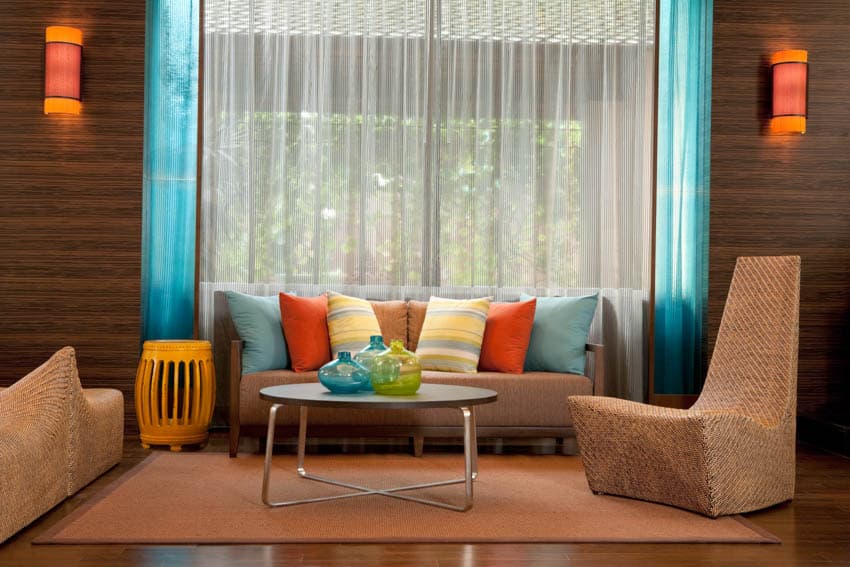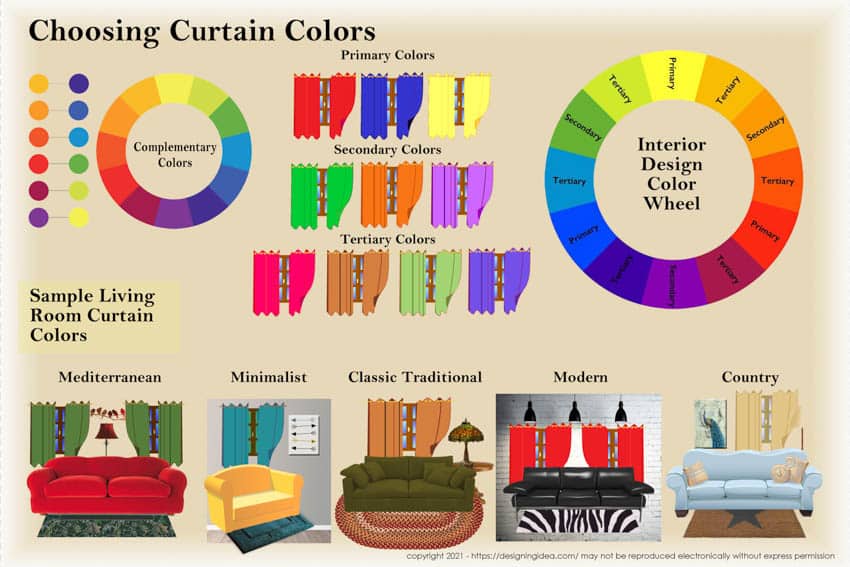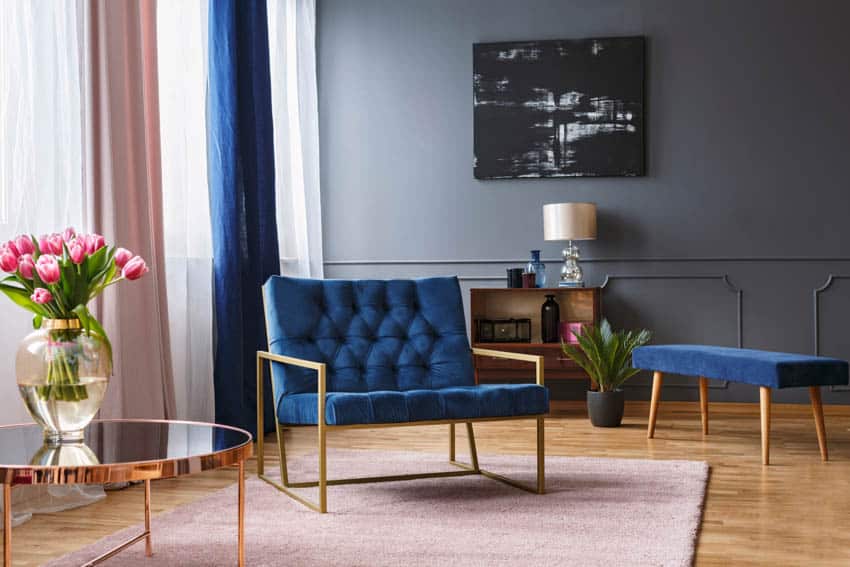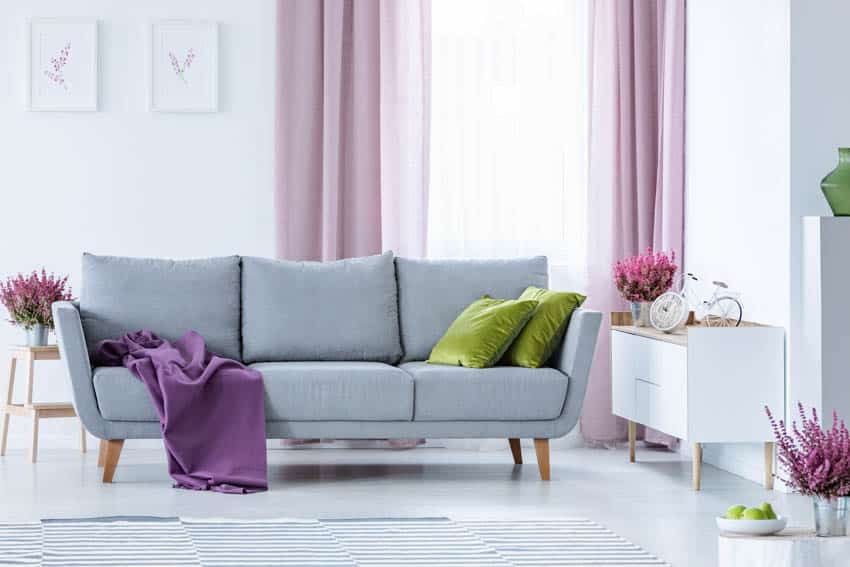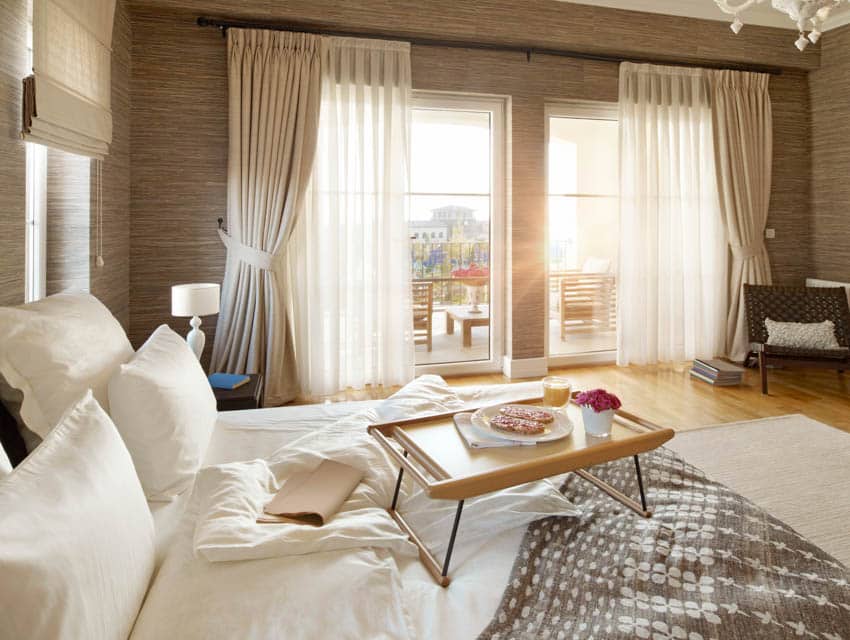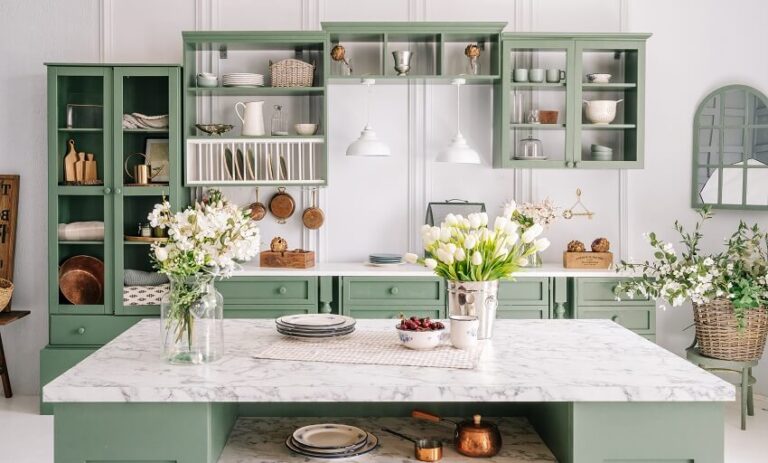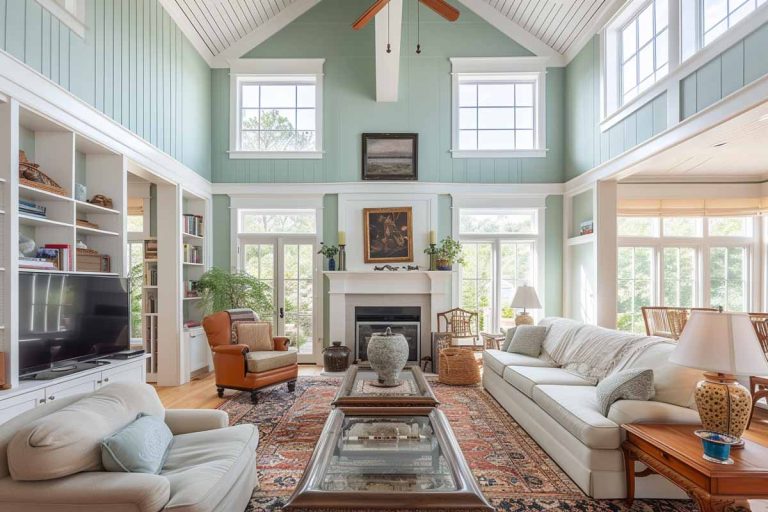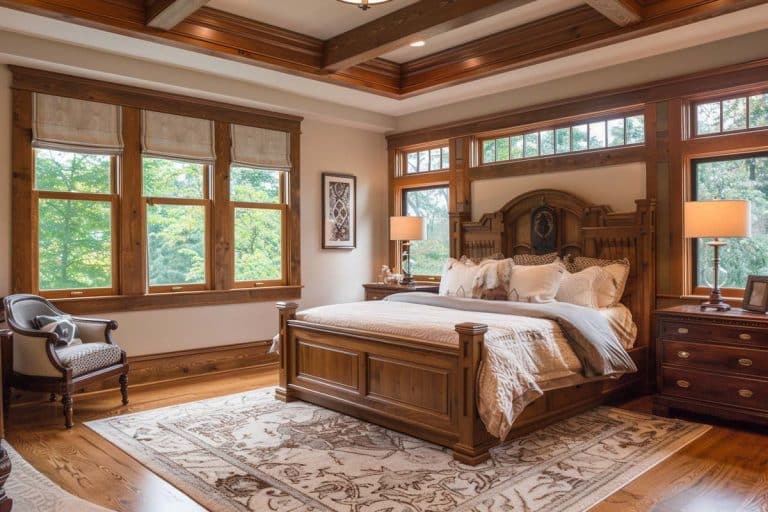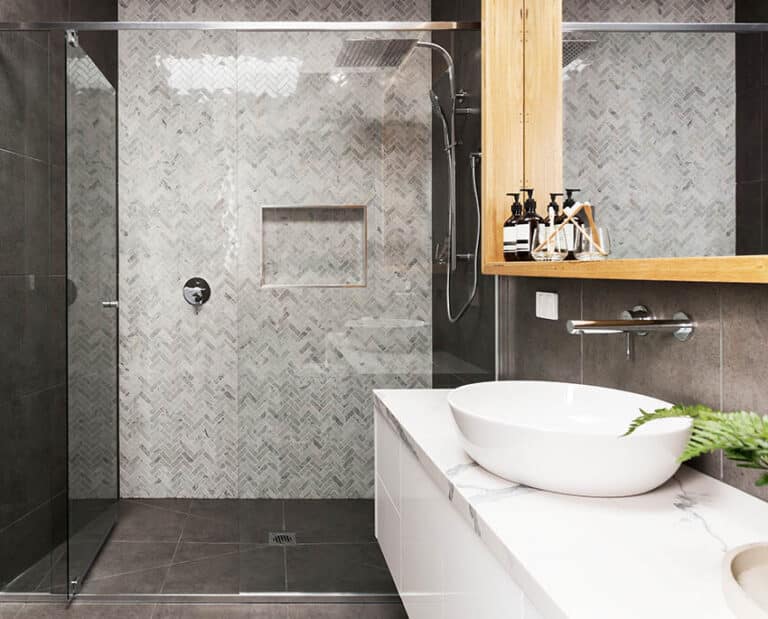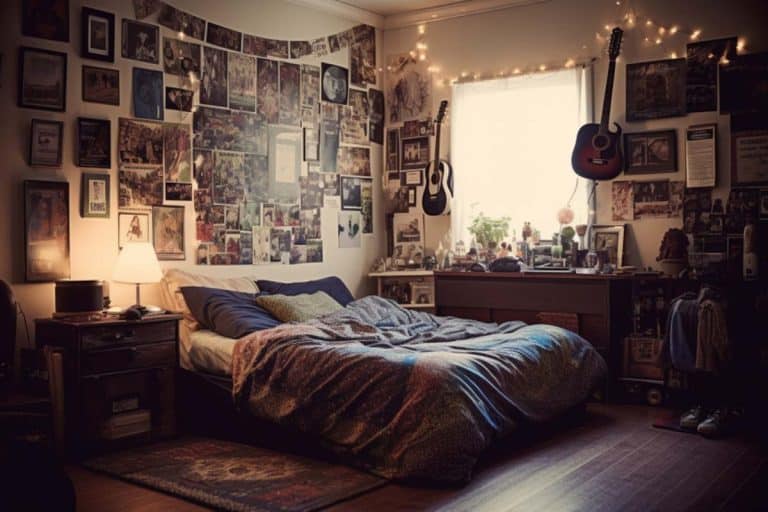How to Choose Curtain Color (Matching Guide)
Window treatments are one of the important choices in any room. If there is only one window in an expansive space, the decision is more straightforward. For rooms with large or several windows, the curtain color can make a big difference in the room’s décor. Curtain colors may blend into some room’s backgrounds or become a highlight for the interior design. Overall, curtain tone and placement have a lot to do with the design you envision.
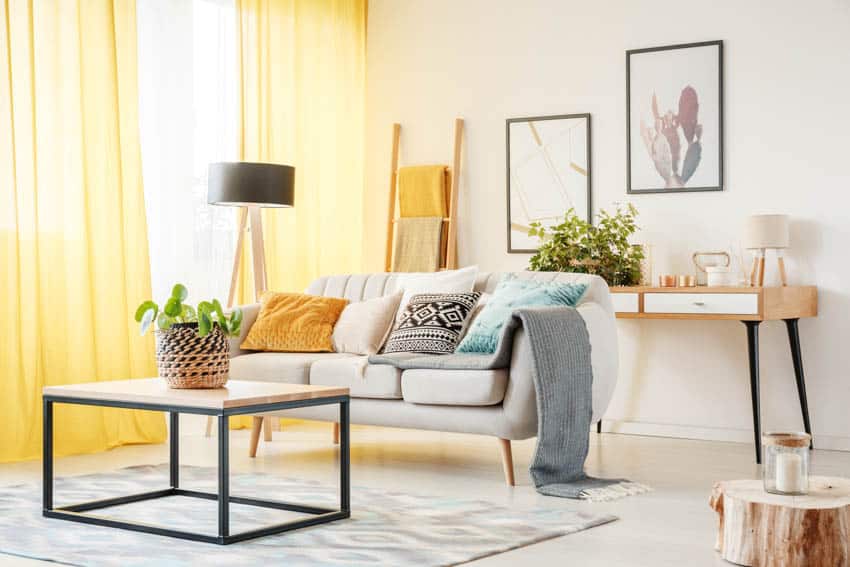
Choosing a curtain color also depends on the type of room. A kitchen breakfast nook may look perfect with particular curtains that otherwise would not fit well in a master bedroom. The same goes for a living room versus a bathroom. This guide provides ways to trim down your curtain color search and find the best-looking treatments for your home décor.
What To Consider When Choosing Curtain Colors
If you’re beginning with an empty room and deciding what kind of color scheme works best, the curtain color choice is a bit easier. With a planned room design including furniture, wall paint, and decor, you have a better idea of what curtains work the best.
If you’re changing existing curtains, the choices are a bit challenging. Still, the new curtains don’t have to be the same hue as the ones being replaced. Either way, matching or accenting colors in the space helps when choosing curtains. Curtains can pull a room together when they match or are close to an accent color. The accent shade could be an area rug, the room trim, the crown molding hue, or the wall color.
It’s not advisable to choose a color from smaller, more temporary items such as lamps, pillows, wall art, or knick-knacks that may be replaced from time to time. Curtain colors can also tie into the furniture in a room’s layout. Instead of struggling with trying to match curtains with the color of the furniture, choose hues that complement or contrast the predominant shade.
Room Style
The style of a room will help you how to choose a curtain color for it.
A formal or classically styled room looks good with darker-colored curtain panels on the sides of a sheer panel. Medium brown panels with a sheer white panel create a wonderful tone for blue furniture.
Minimal or modern-styled rooms typically have a less deep color scheme. If the wall hue is a light grey, curtains that are two shades darker create a seamless look with furniture colors such as orange, black, pale yellow, subtle pink, or slate blue. Grey leaves an open palette for choosing window covering hues and decor.
A country cottage or relaxed room lends itself to pastels. Beige, light blue or sandy-colored walls give way to curtains that are complementary hues to another shade.
For example, sandy walls and seafoam green furniture create a soothing match for pastel orange, ombre, or daffodil curtains. Curtain colors can be complementary or a matching hue in a shade or two lighter or darker.
But if the room is decorated with bold colors or patterns, the curtain hue should be more understated to avoid clashing with the rest of the decor. For a design with muted, solid colors, complementing curtains with a pattern work beautifully. Read more about our guide on colors that help you sleep here.
Color Matching To Pick Curtains
Matching a room element to choose curtain colors commonly involves matching the wall. If you love your wall color, matching the curtains is less intrusive than using a complementing hue.
The effect of the monochromatic wall and curtain hue is serene and opens the room up for additional colors in the furniture, wall art, lamps, and other embellishments. At times, homeowners may think this is too matched or boring, but it creates an elegant look in any floor plan.
You can create the same effect by matching the curtains to the carpeting or flooring. If both are soft or neutral shades, the walls should be a complementing hue instead of matching all three and then creating a dilemma with too much of one shade. Read more about our guide on choosing curtains on beige walls here.
Should Curtains Be Lighter Or Darker Than The Couch?
Your furniture takes up the most floor space in a room next to the carpeting. When choosing a curtain color that’s lighter or darker than the couch, consider the size and placement of the windows.
If the area has tall windows that almost reach from below the ceiling to just above the floor, there will be a lot of curtain fabric that drapes from the windows. In this case, the curtain tone should be lighter so it does not take over the room and detract from the couch.
If the windows are closer to normal sizes such as four feet tall by six feet wide, the curtain tone can be darker than the couch to accent the room’s color scheme. Read more about our guide on blackout curtains vs shades here.
What Color Curtains Are Best?
When deciding which color curtain is best for a room, ask yourself these questions:
What style do I want for the room? Choose a style such as modern, classic, or country, and base the curtain hues on the type of room; kitchen, living, bathroom, or bedroom.
Does the room need more light or is it too bright? Factors like curtain tones should be used to either lighten or darken the room’s design. You can experiment with layering curtain fabrics and using them with sheers if you need additional light filtering, want to change the mood or add privacy.
South-facing rooms get a lot of natural light which can wash out paler hues, creating a shine effect that may be too much to look at. In this case, consider using cool shades such as blue or green to balance the lighting. Conversely, North-facing rooms don’t get as much natural light and may require warmer shades like red, orange, and yellow to brighten things up.
Do you want the curtains to be in the background or to stand out in the room? It helps to decide if the windows are a large part of the space to go with lighter-colored curtains so they are in the background and darker or more vivid-colored curtains to create a design statement.
Do you want the room to have all the same colored objects or contrasting? A monochrome room with one other neutral color palette, such as cobalt blues with white accents, is soothing for a bathroom. Contrasts create a more lively design.
Will you be changing the room’s color scheme often? If you prefer to change the furniture, large area rugs, decor, or walls to another scheme, choose curtain tones that are neutrals and pastels. You can add colors to the furnishings with your pillows, throws, or other home decor items.
Choosing curtain color is a decision based on room design, styles, and budget. By going through all the options and choices presented in this guide, you’ll know ahead of time what curtain hue works the best, saving you time and money.
Make use of a color wheel when searching for curtain colors. This includes the primary colors; red, green, and blue, and secondary hues orange, green, and purple. When primary colors are combined with secondary hues, the results are tertiary colors.
Complementary colors, although they may not seem, create harmony. Opposites attract works with complementary hues.
In its simplest form, determining complementary color works by choosing two shades on opposite sides of the color wheel. The contrast creates a bright and stand-out design. Keep in mind it’s better to use a simple color wheel with the basic 12 shades.
Looking at the chart above, the complementary colors for curtains and furniture would be red and green, blue and orange, or yellow and purple. While these combinations may feel awkward when they are paired with neutral-colored walls or carpeting the results work well together.
If a living room has a lot of wall space painted beige and has beige carpeting, with dark blue furniture, and curtains with shades of orange such as marigold, honey or bronze will create a well-balanced room.
Starting From Scratch
Obviously, you have more options across the board when you start from scratch. This is the perfect time to take a chance on home decor items like curtains that you absolutely love.
No matter what color, texture, or pattern you select, you’ll have a better chance of incorporating curtains into any room if they’re one of the first home decor items you select.
And don’t forget accessories like your curtain rod and pullbacks which should generally match the other finishes in the space.
Just remember that whatever home decor furniture or accent pieces you start with will naturally limit your decorating options for the rest of the room. See more related content at our article about choosing curtain panels on this page.


